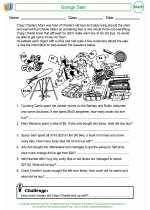Understanding Stormy Weather
Stormy weather refers to atmospheric conditions characterized by strong winds, heavy rainfall, thunder, lightning, and sometimes hail or snow. These conditions are often associated with specific types of weather phenomena such as thunderstorms, hurricanes, or blizzards.
Types of Stormy Weather
There are several types of stormy weather, each with its own unique characteristics:
- Thunderstorms: These are characterized by the presence of thunder and lightning, often accompanied by heavy rainfall and strong winds.
- Hurricanes: These are large, powerful storm systems that form over warm ocean waters and can cause widespread destruction with strong winds, heavy rain, and storm surges.
- Blizzards: These are severe snowstorms with strong winds and low visibility, often leading to drifting snow and dangerous travel conditions.
Safety Precautions During Stormy Weather
It's important to take appropriate safety precautions during stormy weather to minimize the risks of injury or damage. Here are some important safety tips:
- Stay indoors and away from windows during thunderstorms to avoid the risk of lightning strikes.
- Secure outdoor objects that could be blown away by strong winds, such as patio furniture or trash cans.
- Follow evacuation orders and seek shelter in a safe location if a hurricane is approaching.
- Avoid traveling during blizzards and stay informed about road closures and weather updates.
Study Guide
To better understand stormy weather, consider the following study guide questions:
- What are the common characteristics of thunderstorms?
- How do hurricanes form, and what are the potential impacts of a hurricane?
- What safety precautions should be taken during a blizzard?
- How does stormy weather impact the environment and local communities?
Use these questions to guide your research and deepen your understanding of stormy weather.
.◂Math Worksheets and Study Guides Fourth Grade. Money
Study Guide Money
Money  Activity Lesson
Activity Lesson How Much Change?
How Much Change?  Activity Lesson
Activity Lesson Garage Sale
Garage Sale  Activity Lesson
Activity Lesson Scarecrow!
Scarecrow!  Worksheet/Answer key
Worksheet/Answer key Money
Money  Worksheet/Answer key
Worksheet/Answer key Money
Money  Worksheet/Answer key
Worksheet/Answer key Money
Money  Worksheet/Answer key
Worksheet/Answer key Money
Money  Worksheet/Answer key
Worksheet/Answer key Money
Money  Worksheet/Answer key
Worksheet/Answer key Money
Money  Worksheet/Answer key
Worksheet/Answer key Money
Money 

 Activity Lesson
Activity Lesson
 Activity Lesson
Activity Lesson
 Activity Lesson
Activity Lesson
 Worksheet/Answer key
Worksheet/Answer key
 Worksheet/Answer key
Worksheet/Answer key
 Worksheet/Answer key
Worksheet/Answer key
 Worksheet/Answer key
Worksheet/Answer key
 Worksheet/Answer key
Worksheet/Answer key
 Worksheet/Answer key
Worksheet/Answer key
 Worksheet/Answer key
Worksheet/Answer key

Create And Print more Money worksheets with Money Skills Worksheets generator
The resources above cover the following skills:
Algebra (NCTM)
Use mathematical models to represent and understand quantitative relationships.
Model problem situations with objects and use representations such as graphs, tables, and equations to draw conclusions.